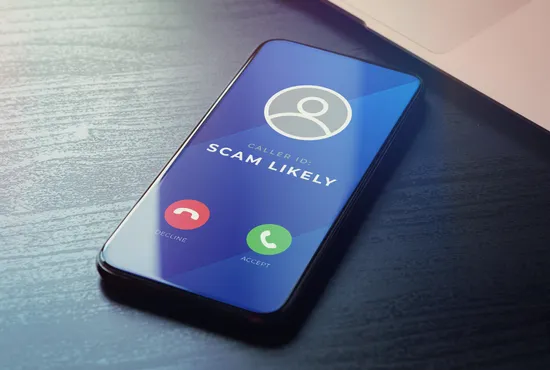
Santander warns of a new scam
Santander is urgently alerting the public to be aware of social media scams after a woman was scammed out of £80,000 while communicating with her newfound friends on an online game. Investigations have revealed that over 70% of purchase scams start on social media platforms, urging all payment service providers to adhere to specific regulations in order to protect their users from frauds where they are swindled into transferring funds illegally.
What happened and how did Santander resolve the matter?

The bank has given the woman her money back and brought in its specialized customer service team to ensure she is taken care of and supported moving forward.
Santander opened the discussion by encouraging other banks to get their act together. Santander is now requiring other banks to include more consistent data sharing and implement confirmation of payee - a fraud prevention system that allows customers to verify the name linked with the account they are transferring funds too. Through this, Santander seeks to ensure greater financial security for its clients and diminish fraudulent activity.
According to Santander action is needed to stop authorised push payment (APP) fraud. The sheer scale and value of APP fraud continues to grow and this is worrying. They point out that the banking sector can initiate certain reforms, yet they are unable to address how fraudsters get access to their victims. This is a serious problem that needs to be addressed.
All banks need to collaborate and tackle this issue because right now the only benefactors are those committing these frauds. Despite the fact that so much has been done and so much is being said about it, there are still huge numbers of people losing their money every day, and fraudsters are coming up with more and more ways.
Text messages impersonating Santander
One of the most recent scams to which customers of this bank are also exposed are text messages impersonating Santander, asking recipients to click on a malicious link about new payers or suspicious activity. In addition, they were discovered many examples of sender ID spoofing with 'Santander', where the fraudulent texts look as if they are coming directly from their financial institution.
The message you received said there was strange activity on your account and a link to click on. Once you have done so, you will be redirected to fill in a form.
Impersonation of various legitimate institutions, officials or banks is a huge problem these days. People are becoming less vigilant when they see emails or messages from a legitimate company, such as Santander, or even the police.
The are other most common Santander scams

Scams involving Santander are on the rise, and with the bank’s wide network of customers, it is important to be aware of some of the most common frauds that can affect you. Here’s a look at the most common types of Santander scams and how you can protect yourself:
- Phishing scams – these scams typically involve emails or text messages that appear to come from Santander. They may claim to offer special rewards or offers, or ask for personal information such as account numbers or passwords. Phishing emails often contain links that lead to fraudulent websites or malicious software downloads. If you receive any suspicious communication purporting to be from Santander, do not click on any links or open attachments.
- Identity theft – criminals may use stolen identity information to gain access to your Santander accounts or apply for credit. If you believe your personal data has been compromised, contact the bank immediately and review your accounts for any suspicious activity.
- Account takeover – fraudsters can gain access to your account by using stolen login details or by impersonating you. Once they have accessed your account, they will attempt to transfer funds out of it and/or purchase goods with it. To protect against this type of fraud, be sure to regularly change passwords on all online banking applications and never give out personal information such as passwords over email or text message.
- Card skimming – this involves criminals stealing debit card numbers from ATMs and using them to make unauthorized purchases or withdraw cash. To protect yourself against card skimming, use ATMs in well-lit areas and always look for signs of tampering before inserting your card.
- Phone scam – criminals may contact you by phone claiming to be from Santander, asking for personal information such as bank details or passwords. They may also attempt to persuade you to provide funds for a fake investment or loan.
You may be contacted by someone pretending to be a bank employee and claiming to be a victim of attempted fraud. Be sure not to give out any personal or financial information over the phone, contact details, account details and hang up if you are suspicious of who is calling.
How to report fraud?

If you are a Santander bank customer and believe you may have been scammed call 03309 123 123 or 0800 313 4321 (toll free) and report it to Action Fraud on 0300 123 2040. You can also report suspicious texts that appear to be from Santander to [email protected].
What to do to avoid being scammed?

It is important to be aware of the potential scams that exist when dealing with money online. Santander warns customers to be vigilant against number display scams where a person may call claiming to be from their bank, requesting payment via bank transfer for an unexpected or urgent matter. It is important not to accept any payments or provide personal information as this could lead to potential fraud. In addition, it is wise to double check the number being displayed on your caller ID for accuracy and ensure that you are in contact with an actual representative from Santander before providing any personal details or making any payments. If the number appears suspicious, hang up immediately and call your local branch directly. Remember – always trust your instincts!
By staying informed and following basic safety protocols, customers can protect themselves from falling victim to number display scams. Keep in mind that Santander will never ask for your bank details or payments over the phone and any request made should be immediately questioned. Never provide personal information or accept payment from someone you do not know. If you receive a suspicious call or encounter fraudulent activity of any kind, contact your local branch as soon as possible and report it to the relevant authorities. Taking proactive steps can help keep you secure and allow you to enjoy banking with peace of mind.
With these tips in mind, Santander encourages its customers to continue using their digital services safely and securely.